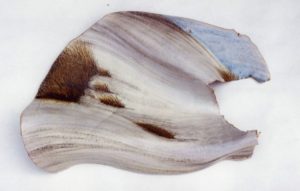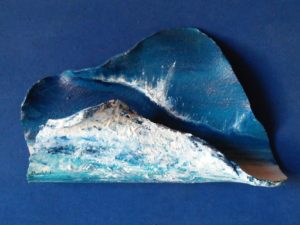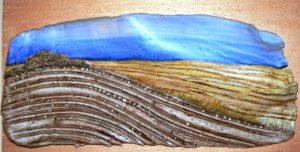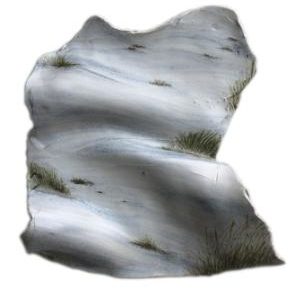
Duna di ceramica
In Romagna/Italy, for sfoglia we mean homemade pasta, with which we get tagliatelle, cappelletti and other wonders of our gastronomic tradition, in fact there is a link between that type of pasta and the one I used until a few years ago with great fun and a bit of effort, to make the dunes, and other ceramic reliefs.
Too bad they were not edible like tagliatelle, or maybe it’s better that way, because the majolica, like the porcelains do not age, do not go bad, they keep for a long time, ceramics is among the most long-lived materials , if we think of the ancient finds that are found in the archaeological excavations.
The technique of the sfoglia or slab is rather simple, I particularly like it for the gestures and spontaneity that implies.

Ceramic
It is about cutting clay slabs in the plastic state of the thickness of ab. 8 mm. with the cutter if you have it available or with the wire, for years I used the fisherman’s burr to which I tied flaps of fabric at the ends to facilitate the grip.
The slab is literally thrown on a wooden plane with a horizontal movement and in some cases slightly rotary, puffed, all the shots that can induce clay movement, relief, everything except release it from top to bottom without any hand’s motion.
This causes dips and rises in the body of the slab which can suggest many representations, evoke natural forms and landscapes.
Even if you started from a plate with regular dimensions, like a precise rectangle, you can be sure that this “whisk or guided launch” generates an irregular and pleasantly sinuous surface that, as always, can be  improved with practice. and in any case the clay is always recyclable!
improved with practice. and in any case the clay is always recyclable!
I liked representing the dunes, the waves of the sea and the rural landscapes.
Once dried and fired at 930/950 degrees in the case of majolica clay, if you want to obtain a ceramic product, it must be glazed, painted and re-fired, this time at a temperature of approx. 920 degrees.
I prefer matt glazes for this kind of work, they seem closer to nature.
To decide where to intervene with painting I often let myself be guided by the ditches or the reliefs obtained, for example, I paint a tuft of coastal grass in the hollow of the tile as if it were the protected space between the hills of the dune, or I use a protruding slab to represent the sea wave in a stormy sea.
On other reliefs I’ve imagined cultivated fields, or sweet Umbrian / Tuscan hills.
Fantasy has no limits, if we are not limited to it !!!

